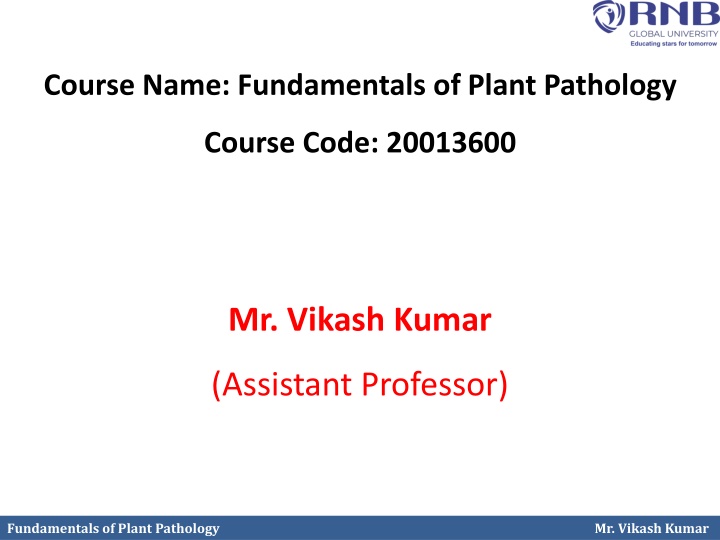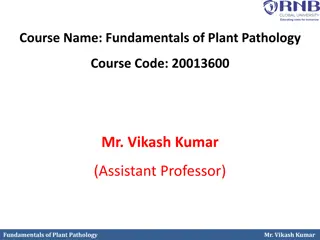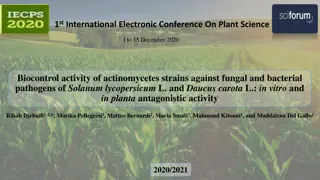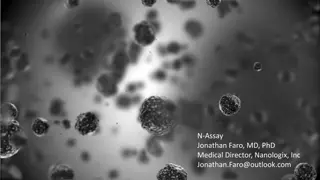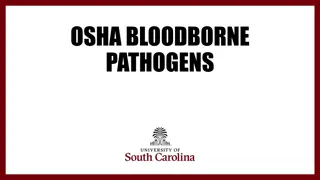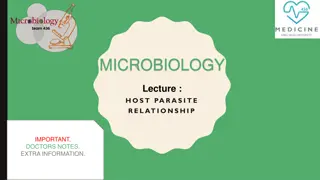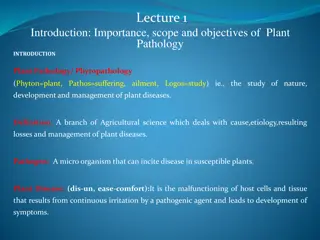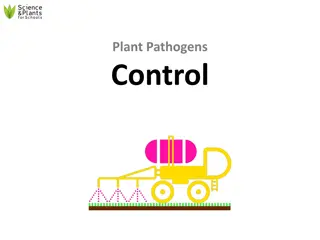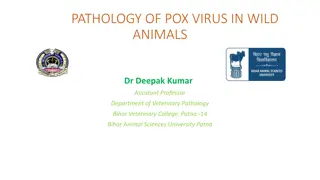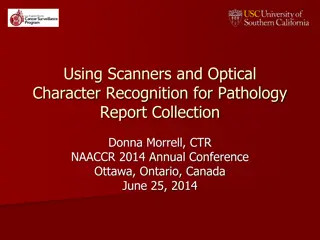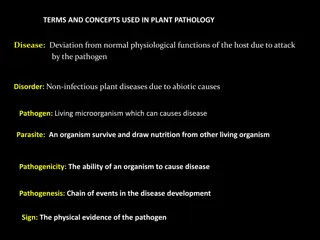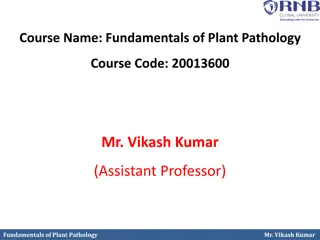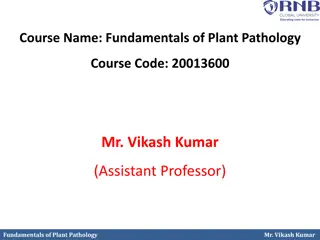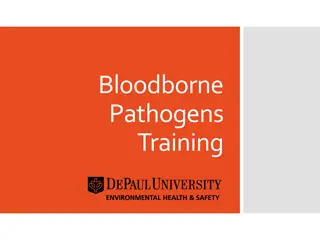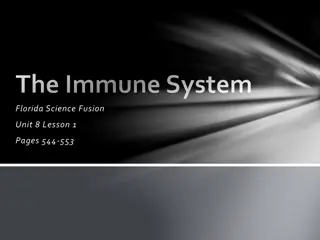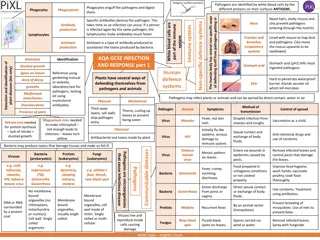Fundamentals of Plant Pathology with Mr. Vikash Kumar - Course Overview and Important Pathogens
This course with Mr. Vikash Kumar covers the fundamentals of plant pathology, including identification of diseases, pathogen nature, disease management strategies, and principles. Learn about important plant pathogenic organisms such as fungi, bacteria, and fastidious vascular bacteria, along with specific diseases caused by them.
Download Presentation

Please find below an Image/Link to download the presentation.
The content on the website is provided AS IS for your information and personal use only. It may not be sold, licensed, or shared on other websites without obtaining consent from the author.If you encounter any issues during the download, it is possible that the publisher has removed the file from their server.
You are allowed to download the files provided on this website for personal or commercial use, subject to the condition that they are used lawfully. All files are the property of their respective owners.
The content on the website is provided AS IS for your information and personal use only. It may not be sold, licensed, or shared on other websites without obtaining consent from the author.
E N D
Presentation Transcript
Course Name: Fundamentals of Plant Pathology Course Code: 20013600 Mr. Vikash Kumar (Assistant Professor) Fundamentals of Plant Pathology Mr. Vikash Kumar
Course Objectives 1: Name and identify different Diseases, nature of pathogens and different strategies for management of plant diseases. 2: Outline concepts, nomenclature, classification and characters of pathogens 3: Apply different principles and methods for plant disease management. 4: Take a part in identification of diseases and marketing of relevant pesticides. 5: Conclude methods to diagnose and manage a wide range of plant diseases. Fundamentals of Plant Pathology Mr. Vikash Kumar
Important plant pathogenic organisms (fungi, bacteria, fastidious vesicular bacteria, phytoplasmas, spiroplasmas, viruses, viroids, algae, protozoa, phanerogamic parasites and nematodes) Fundamentals of Plant Pathology Mr. Vikash Kumar
1. Fungi: Fungi are eukaryotic, spore bearing, achlorophyllous organisms that generally reproduce sexually and asexually and whose filamentous, branched somatic structures are typically surrounded by cell walls consisting chitin or cellulose or both with many organic molecules. The diseases cuased by fungus are E.g. Wheat Rust by Puccinia graminis, Late blight of potato by Phytophthora infestans, white rust of mustard by Albugo candida, Damping off by Pythium Fundamentals of Plant Pathology Mr. Vikash Kumar
2. Bacteria: Bacteria are microscopic, rigid, unicellular, chlorophyll less, prokaryotic organisms reproduce mainly by fission. The diseases caused by bacteria are E.g. Citrus canker by Xanthomonas axonopodis p.v. citri, Bacterial leaf blight of rice by X. campestri p.v. oryzae, Angular leaf spot of cotton by X.c. p.v. malvacearum, soft rot of vegetables by Erwinia carotovra p.v. carotovra 3. Fastidious vascular bacteria (RLO s). Fastidious vascular bacteria are similar to bacteria in most respects but are obligate parasites or cannot be grown on normal bacteriological media. E.g. Pierce s disease of grapevines, strawberry lethal yellows. Fundamentals of Plant Pathology Mr. Vikash Kumar
4. Mollicutes(phytoplasma and spiroplasma) : (a.) Phytoplasma: Phytoplasmas are pleomorphic, wall less prokaryotic microorganisms that can infect plants and cannot yet to be grown in culture. Plant disease e.g. Citrus greening, yellows (yellowing and stunting), little leaf, virescence(greening of flowers), phyllody (flowers turn into green leafy structures), witches broom (broom like growth or massed proliferation caused by the mass clustering of branches), bronzing of leaves. (b.) Spiroplasma: Spiroplasmas are helical, wall less prokaryotic micro-organisms that are present in phloem of diseased plants, often helical in culture and are thought to be a kind of mycoplasma and can be cultured on artificial medium and colonies have fried egg appearance. E.g. Citrus stubborn, corn stunt disease transmitted by leaf hopper. Fundamentals of Plant Pathology Mr. Vikash Kumar
5. Virus: A sub-microscopic, obligate parasite consisting of nucleic acid and protein that multiplies only intracellularly and is potentially pathogenic. E.g. Tobacco mosaic virus, Papaya Yellow vein mosaic, Chilli Leaf Curl 6. Viroids: Small, low molecular weight ribonucleic acids(RNA) that can infect plant cells, replicate themselves and cause disease in plants. E.g. - Coconut Cadang-Cadang 2. Potato spindle tuber, 3. Citrus exocortis Fundamentals of Plant Pathology Mr. Vikash Kumar
7. Algae: Algae are eukaryotic, photosynthetic, uni or multicellular organisms,containing chlorophyll and a few algae mainly green algae cause plant diseases. Eg. Red rust (Cephaleuros sp.) of tea, mango and citrus. 8. Flagellated protozoans: Protozoa are microscopic, non- photosynthetic, eukaryotic, flagellate motile, single celled animals. Eg. phloem necrosis of coffee (Phytomonas leptovasorum), hart rot of coconut, sudden wilt of oil palm. Fundamentals of Plant Pathology Mr. Vikash Kumar
9. Phanerogamic parasite: There are few seeds plants called flowering parasites (Phanerogams) which are parasitic on living plants. Some are devoid of chlorophyll and entirely dependent on their host for food supply they are called as Holoparasites or complete or total parasite. while other have chlorophyll and obtain only mineral constituents of food from host by drawing nutrition and water they are called as Semi parasites. They have haustoria as absorbing organs, which are sent deep into the vascular bundle of the host to draw nutrients, water and minerals. Fundamentals of Plant Pathology Mr. Vikash Kumar
Flowering Plant Parasites: There are two types of parasites. 1. Root Parasites: a. Striga (Witch Weed or Turfula or Talop)-Partial root parasite b. Orobanche (Broom rape or Tokra)-Complete root parasite 2. Stem Parasites: a. Cuscuta(Dodder, Amarvel, Lovevine)-Complete stem parasite b. Loranthus-Partial Stem parasite Fundamentals of Plant Pathology Mr. Vikash Kumar
10. Nematodes: Nematodes are diverse group of round worms occur worldwide in essentially all environments. Nematodes are also known as eelworms in Europe, nemas in the United States and round worms by zoologists. Example Wheat Seed Gall Nematode (Anguina tritici)-The nematode alone causes ear-cockle disease in wheat, and in association with the bacterium Clavibacter tritici, it produces yellow ear rot or tundu disease. Root-Knot Nematodes (Meloidogyne spp.) in vegetables Cereal Cyst Nematode (Heterodera avenae)-Infestation of nematode which caused molya disease was recorded for the first time from the Sikar district of Rajasthan in India (Vasudeva 1958). Fundamentals of Plant Pathology Mr. Vikash Kumar
Thank You Fundamentals of Plant Pathology Mr. Vikash Kumar
